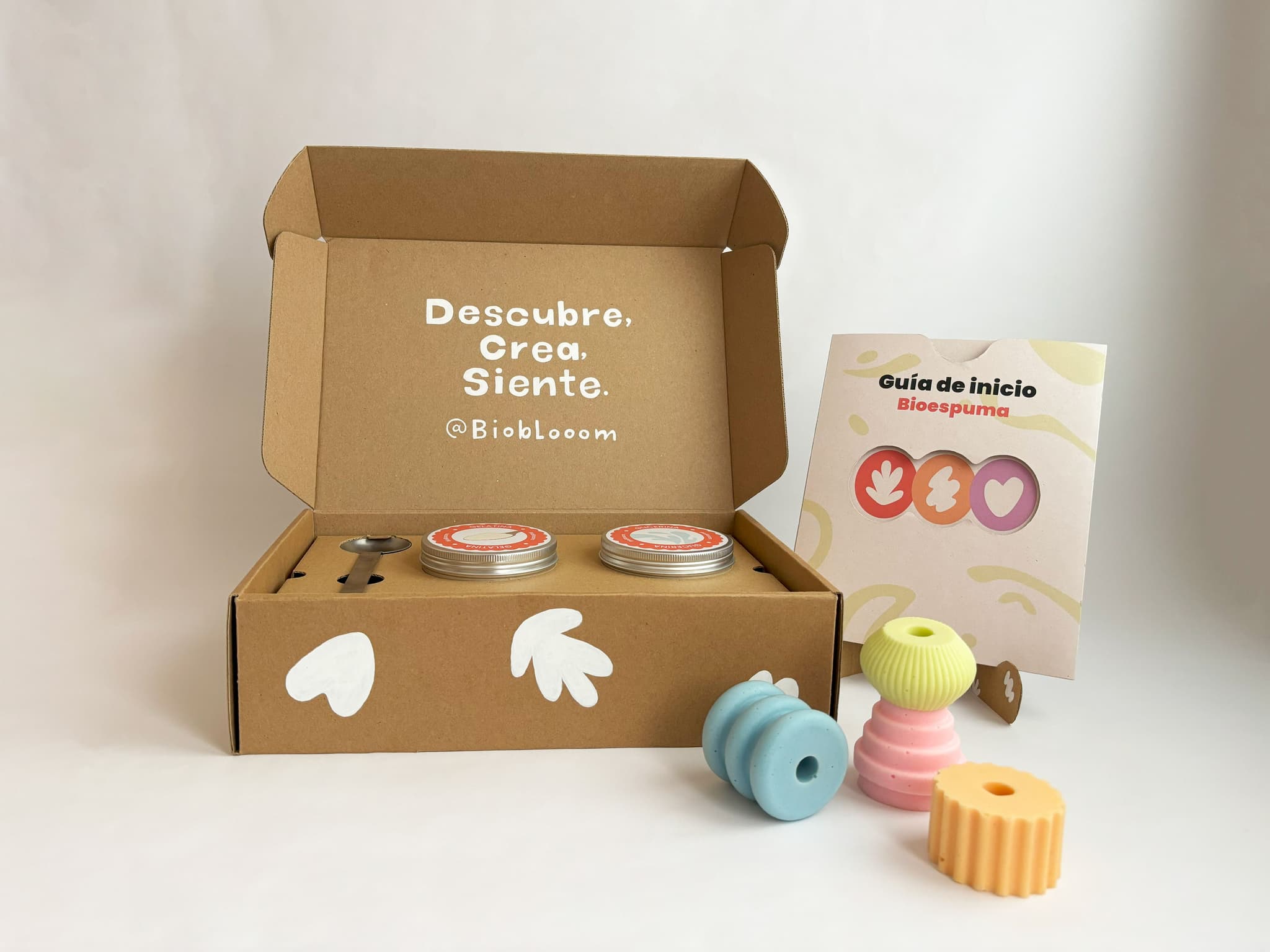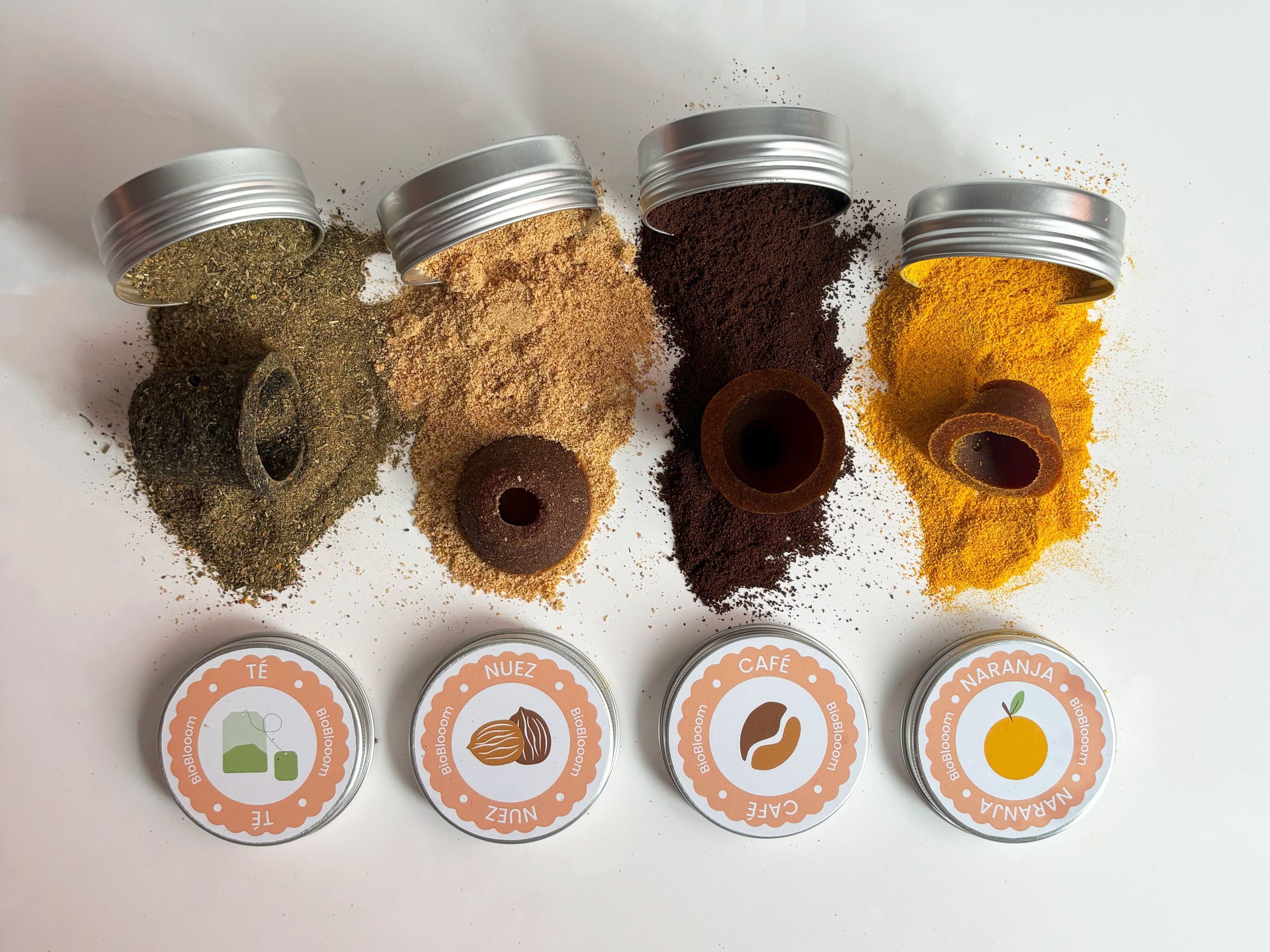1. In the Bioblooom project you explore biomaterials. Can you describe which specific organic materials you selected and what inherent properties made them ideally suited to your botanical-inspired form?
The choice of organic materials wasn’t accidental. It was rooted in my daily surroundings. I live in Valencia, Spain, where there's an almost poetic abundance of organic waste: orange peels, coffee grounds, tea leaves, walnut shells, and eggshells. They’re everywhere. It felt only natural that instead of letting them decompose unnoticed, they could become the backbone of something sculptural and evocative. Being both locally available and plentiful, they made sense, ecologically and conceptually, for Bioblooom.
Each material came with its own secrets. Coffee and walnut surprised me with their tenacity and durability. Orange offered elasticity and lightness. Tea brought a gossamer-like fibrousness. Eggshells gifted a stony rigidity with a luminous, mineral gleam. But beyond the technical marvels, I was seduced by their personalities, the earthy smell of coffee, the zingy brightness of citrus, the tactile, grounded presence of each. They brought not just structure, but emotion and sensory resonance.
What I cherish most is how everyday waste becomes something with narrative, identity, and visual poetry. Bioblooom doesn’t borrow from synthetic imports. It blooms from what the land already sings.

2. How did your process of material transformation, from raw biomaterial to finished component, shape the final aesthetic and functional outcome in Bioblooom?
Everything began with the fundamentals: cleaning, drying, and grinding each organic residue. From there, I developed three core formulations: bioceramic, biofoam, and bioplastic. Each one finicky, each one full of potential. Countless tests followed, endlessly tweaking proportions and methods.
Designing with 100% natural biomaterials is a lesson in humility. Their fragility meant working around their drying times, their susceptibility to mold, their need for breathability. For example, biofoam became a playground for more ornate, intricate designs, thanks to its rapid drying and flexibility. Bioceramic and bioplastic, more stoic and slow, demanded pared-back shapes and releasable molds to minimize stress on the material.
The materials didn’t just support the design. They steered it. They shaped the final pieces into totemic objects with a dual purpose: both educational tools and decorative artefacts. Bioblooom isn’t static. It’s an invitation to engage.
3. What technical challenges did you face in working with living or biodegradable materials, and how did you adapt your fabrication techniques to manage those constraints?
Biodegradable materials are a bit like wild creatures. Beautiful, unpredictable, and extremely sensitive. Drying was my biggest frenemy. Too slow and mold sets in. Too fast and you get cracking or brittleness.
Consistency was also elusive. A flawless coffee-based bioplastic could become a crumbly mess when made with orange peels. Each recipe required its own alchemy. Among the trio, biofoam was the most forgiving. Quick to dry, nimble in the hand. In contrast, bioceramic and bioplastic needed more patience and care. I adjusted by using low-intervention molds and techniques that allowed the pieces to settle with grace.
These adaptations didn’t just protect the integrity of the pieces. They preserved the raw, sensual textures and scents that made each one special.

4. How do you evaluate and minimise the environmental impact of sourcing, processing, and disposing of these biomaterials?
From the outset, low impact was the rule, not the exception. I worked exclusively with local organic waste. Those ubiquitous peels, shells, and grounds from Valencia. Cutting down on carbon from transport and reconnecting with place.
Processing stayed low-tech and low-energy. No chemicals. Just water, air, and time. Binders were strictly natural, like gelatin, keeping the whole process clean and compostable.
I designed with disappearance in mind. Each piece can biodegrade gracefully, becoming part of the soil. Nothing lingers, nothing pollutes. It's a design cycle that ends where it began. With the earth.
5. In the creation of Bioblooom, how do you balance material performance (strength, durability, flexibility) with ecological considerations, given the often contrary nature of these goals?
It starts with letting go of the need for permanence. Durability doesn’t mean forever. It means long enough to serve its purpose, and no longer. I leaned into material honesty. Rather than fighting the nature of each material, I celebrated it.
Coffee and walnut brought the rigor I needed for structure. Orange, ever flexible, was suited to lighter, decorative forms. Biofoam, a kind of miracle, gave me a lightweight material that could hold both form and playfulness.
No synthetic reinforcements. Just form, proportion, and structural clarity doing the work. Letting the material lead, always.
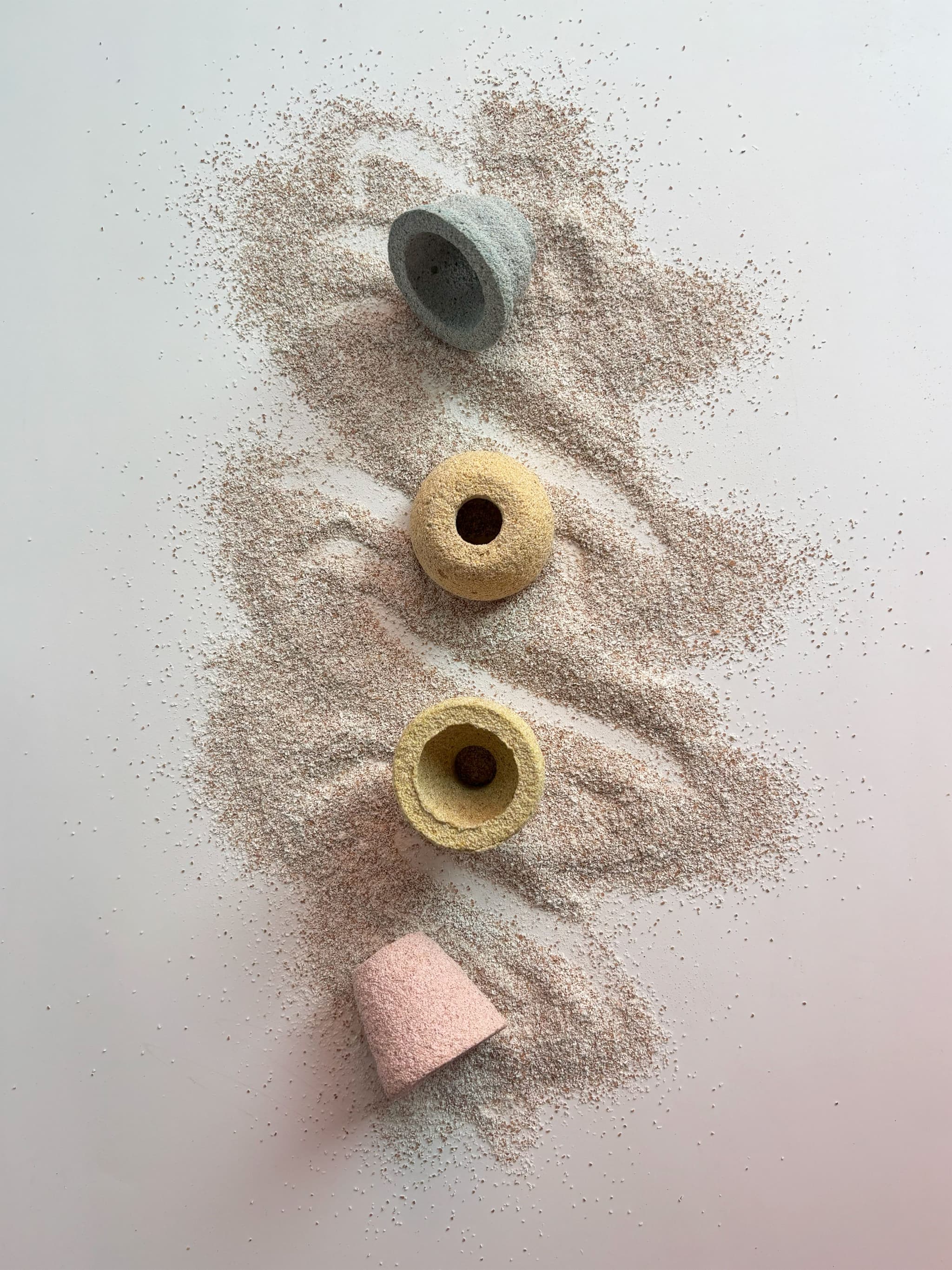
6. Could you specify how your digital prototyping tools (e.g. Rhino or Cinema 4D) informed or perhaps constrained your exploration of materiality in earlier stages of Bioblooom?
Rhino and Cinema 4D were like sketchbooks with superpowers. Once I understood the behaviour of each biomaterial, digital tools helped me map out possibilities. Exploring volume, thickness, and release angles for molds.
But digital tools are idealised. They don’t predict shrinkage, warping, or the joyful unpredictability of real, living matter. So I always left room for serendipity. The screen was a hypothesis. The material, the truth.
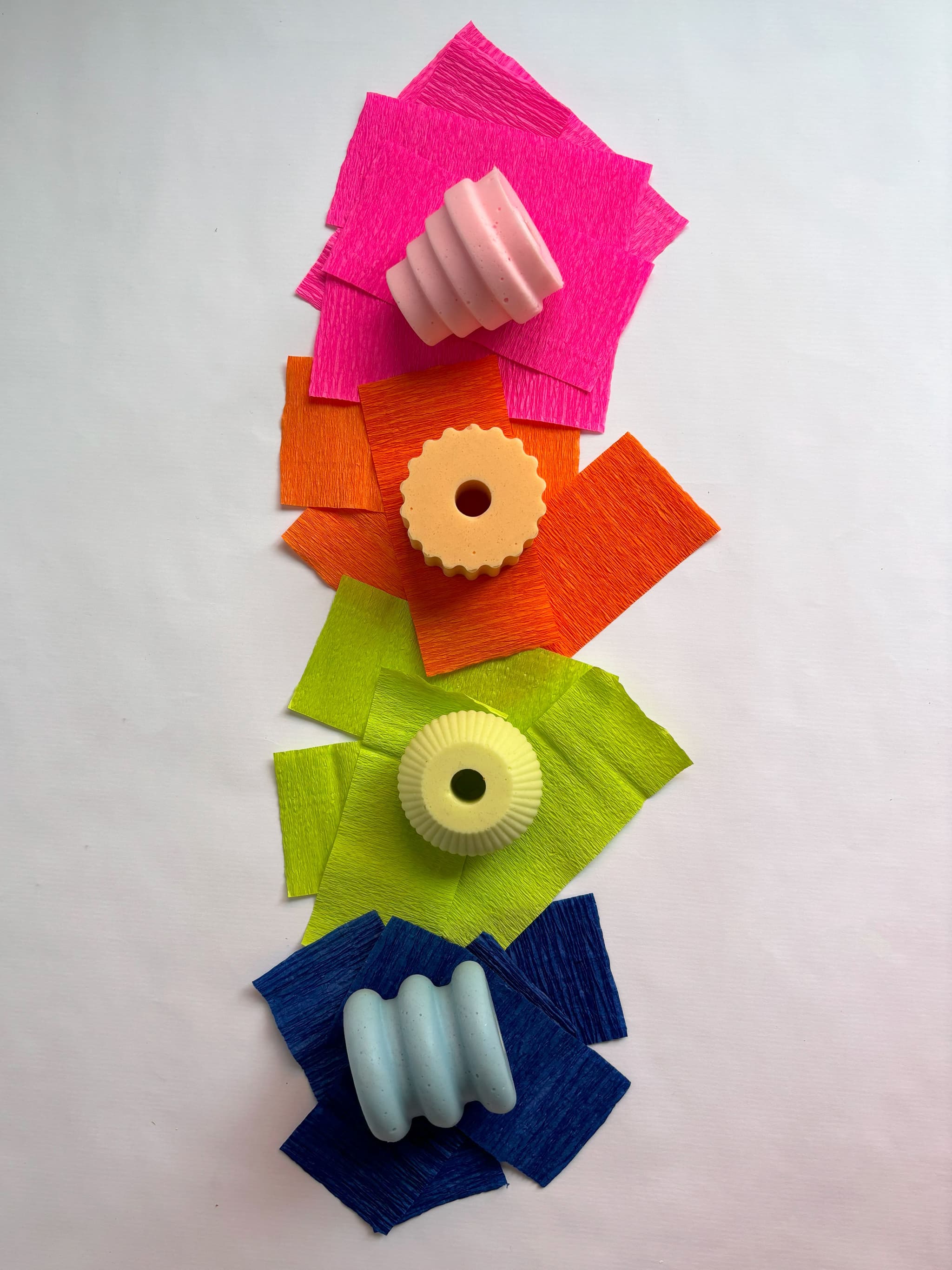
7. Bioblooom merges UX and physical form. How did you integrate user experience thinking into the material selection and overall interaction with the piece?
User experience was always in focus. Both physical and emotional. I picked gelatin as a binder not just for performance, but because it’s intuitive, safe, and friendly. Even for children.
I obsessed over smell, texture, and touch. Coffee, tea, orange. These bring their own aromatic charms. For the less fragrant materials, I added vanilla essential oil to invite warmth and memorability.
Each kit is meant to be playful and personal. Multiple molds, shapes, and colours. No two pieces come out the same. That was intentional. The kit isn’t just about making. It’s about exploration, joy, and self-expression.
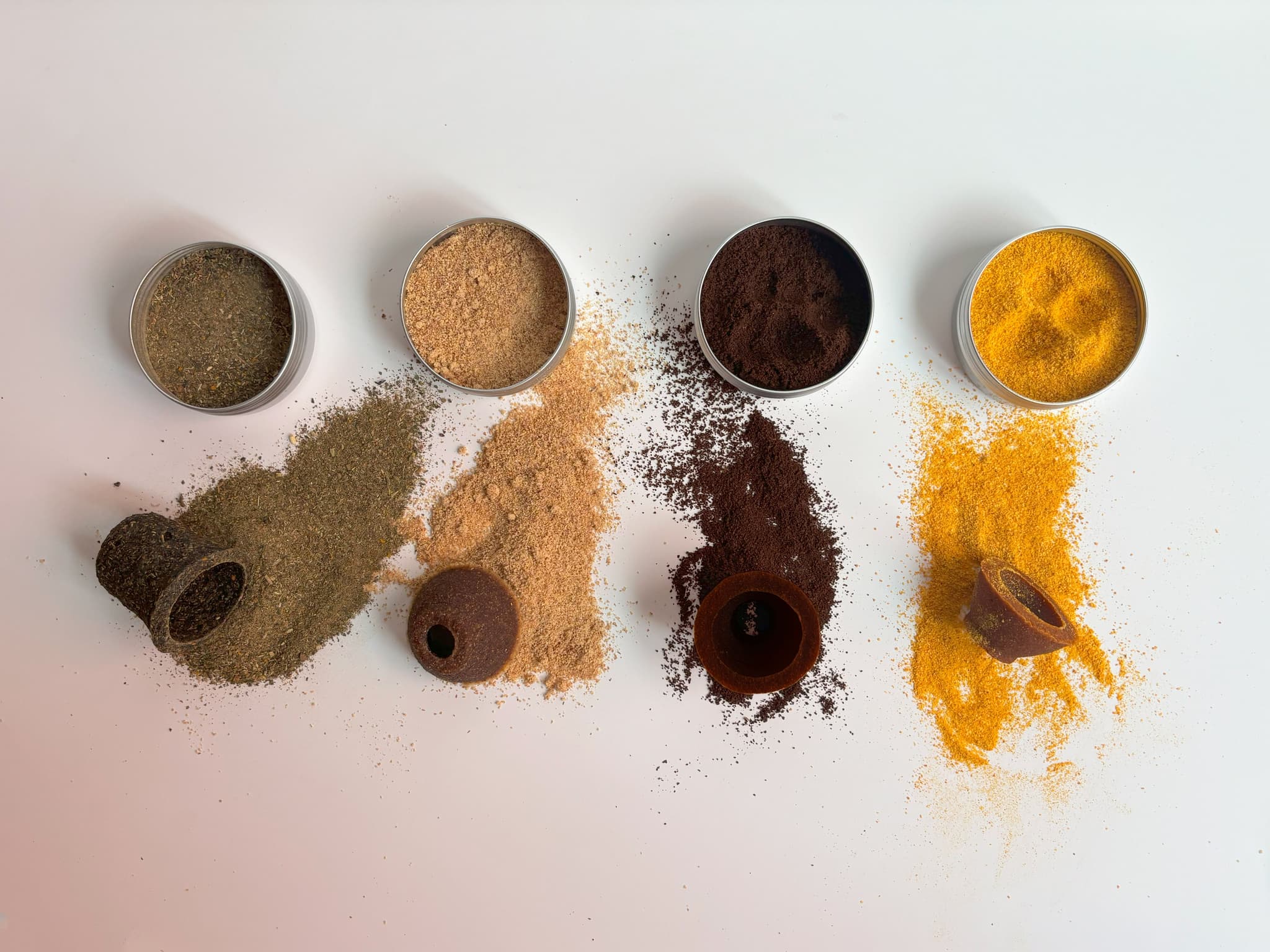
8. What craft or production techniques: manual or industrial? Did you use to bring out the textural qualities or structural behaviour of your biomaterials?
The process was entirely manual. On purpose. Since Bioblooom is a kit for at-home making, I wanted to reflect that intimacy in my own prototyping.
The only industrial element was the mold production, to ensure reliability. But even there, I was careful not to over-smooth or over-polish. I wanted fibers, grains, and textures to stay alive on the surface. Final touches, like a swipe of natural oil, helped bring out colour and scent without muting the material’s identity.
9. How do you envision future developments in biomaterial innovation impacting the scalability or commercial potential of designs such as Bioblooom?
We’re at a pivotal moment. Biomaterials are growing up. Faster production, better stability, broader applications. This evolution could allow Bioblooom to scale while preserving its intimate, handcrafted spirit.
But I believe in local production, not centralised manufacturing. Imagine mini-labs in cities, each using their own regional waste. Just like I did with Valencia’s oranges and coffee. That’s how we make circularity real.
As these materials mature, I see potential in homeware, interiors, packaging, even everyday goods. The future is handmade, but at scale.
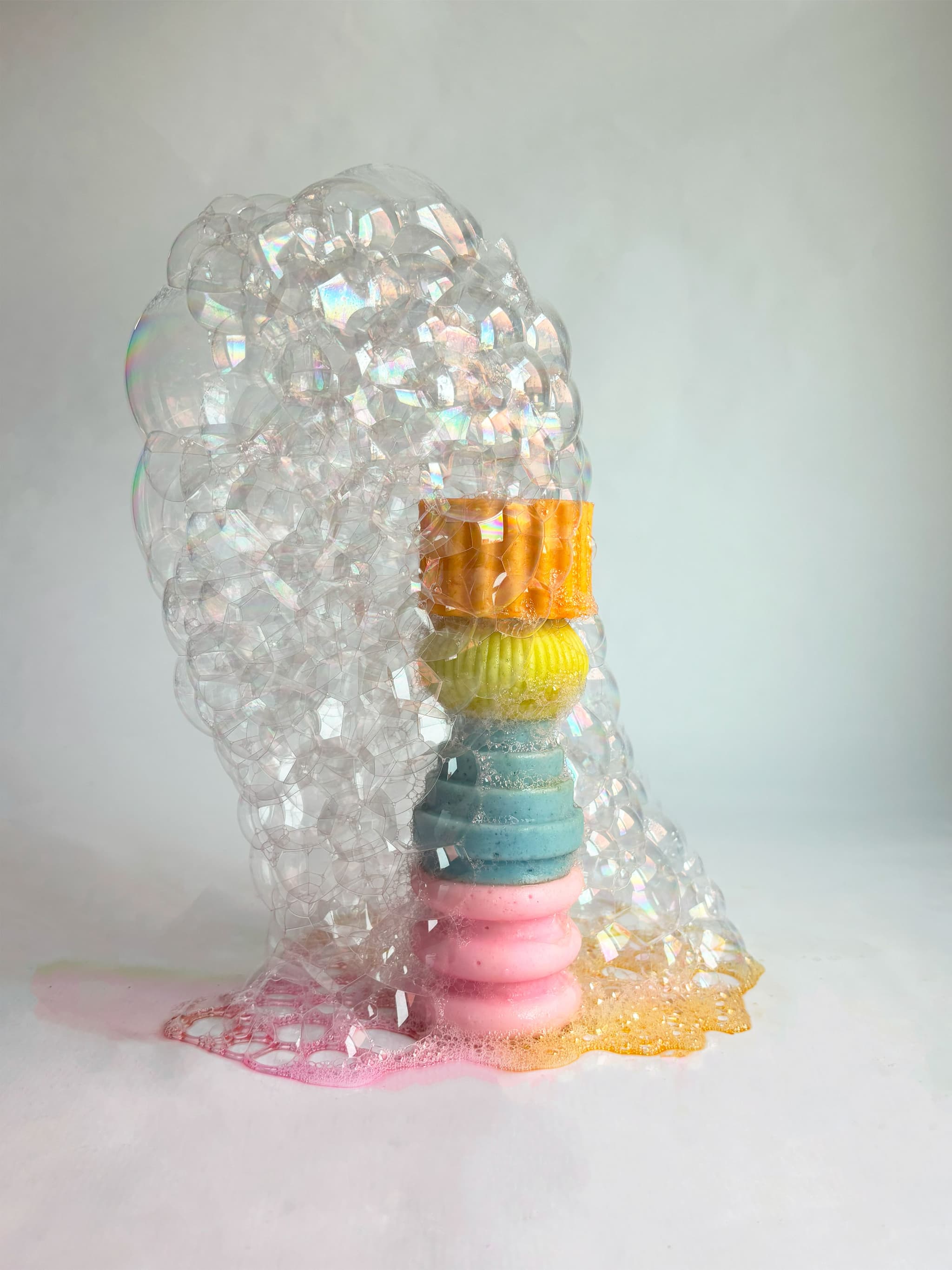
10. Selection for the Meta catalogue highlights the conceptual strength of Bioblooom. How did you approach the challenge of translating abstract ideas, like emotional sustainability and nature-centred design, into tangible material decisions throughout the development process?
I didn’t want to lecture about sustainability. I wanted people to feel it. So I used emotion as a material. Scent, texture, colour. All designed to create affection and curiosity. You can’t ignore a warm, citrus-scented object in your hand. It asks to be held, remembered.
Nature-centred design meant listening to the materials, not dominating them. If they wanted to dry slowly, I let them. If they formed irregular patterns, I kept them. That organic imperfection became the aesthetic.
Because it’s a kit, users get to live that philosophy. They make, touch, and learn through doing. That’s how ideas become experiences.

11. How has your background, especially experiences at workshops like Makea and What If Lab, inspired your design philosophy, especially regarding the use of recycled or community-driven materials narratives?
At Makea, I saw design as a communal act. We worked with discarded materials and embraced not knowing where things might go. That sense of openness and resourcefulness stayed with me.
What If Lab added a layer of listening. We co-created with communities, which taught me to put the user’s lived experience at the centre.
Together, these experiences shaped Bioblooom’s core. Local materials, shared creativity, and design as dialogue.

12. What emerging biomaterials or sustainable production techniques are you most excited to explore in product design?
I’m really excited about how emerging biomaterials are evolving and opening up new creative possibilities. Right now, I’m especially drawn to materials that not only repurpose organic waste but also elevate performance. Like mycelium-based composites, algae-derived bioplastics, and bacterial cellulose. They’re renewable, biodegradable, and often self-transforming. Making the design process feel more like a collaboration with nature than a command.
Another area I’m exploring is localized, small-scale manufacturing. I don’t think the future needs massive, centralized factories. Instead, I imagine distributed models, where materials are produced close to their source. Adapting to what each region offers. This makes design more context-driven, authentic, and embedded in real life.
What excites me most is imagining a world where these materials go beyond experimental niches. Becoming part of our everyday design landscape. From packaging and interiors to education and community projects, it's about rethinking not just what we make, but how we make it. And crafting objects that are both innovative and deeply sustainable.
